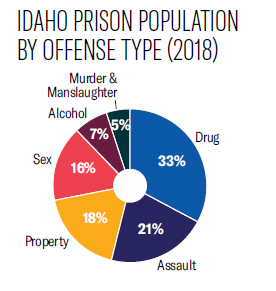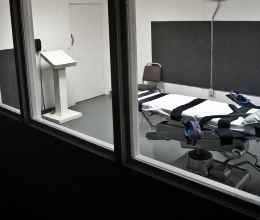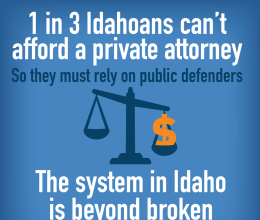
Blueprint for Smart Justice Idaho Report
Idaho has 8,616 people in prison. We can reduce that number.
Like most states, Idaho’s prison population has exploded in recent decades.
Between 1980 and 2017, the state’s prison population grew by 849 percent. As of June 2018, there were 8,616 people in Idaho prisons. In addition to Idaho’s prison population, in 2015, there were an estimated 3,467 people under local jurisdiction in county jails in Idaho. Aware of the unsustainable growth of the incarcerated population, Idaho lawmakers attempted to reverse course by engaging with the Justice Reinvestment Initiative in 2014. In spite of a modest decrease in the prison population following these reforms, it has since increased, and the state’s prisons were at 100 percent of capacity in December 2017.
An astounding 71 percent of prison admissions in Idaho were for violations of probation or parole in 2017. That year, Idaho tied with Washington as the states with the largest share of annual prison admissions for supervision violations. As of June 2018, 58 percent of people in the state’s prisons were serving time for nonviolent offenses. To manage the shortage of beds in Idaho prisons and jails, the Idaho Department of Correction (IDOC) has sent hundreds of people under its jurisdiction to private, out-of-state prisons, such as Eagle Pass Correctional Facility in Texas. People imprisoned in this facility report unsafe conditions and inadequate access to medical care and healthy food.

All of this comes at a high cost to taxpayers. In 2017, Idaho spent $252 million of its general fund on corrections, and between 1985 and 2017, general fund spending on corrections grew 754 percent.
Unsurprisingly, Idaho’s mass incarceration crisis has had an enormous impact on people of color. In 2017, the imprisonment rate for Black adults in the state was nearly five times the rate of that for white adults, and the imprisonment rate for Native American adults was nearly four times the rate of that for white adults. Women have also been greatly affected by the state’s climbing incarceration rates. As of 2017, Idaho had the nation’s fourth-highest imprisonment rate among women, behind only Oklahoma, Kentucky, and South Dakota.
But it doesn’t have to be this way.
Idaho can dramatically reduce its prison and jail populations by implementing just a few sensible reforms:
- Expanding its investment in alternatives to incarceration like those piloted in Ada County.
- Reaffirming its commitment to the Justice Reinvestment Initiative bill by further strengthening community supervision programs to reduce recidivism.
- Investing in public defense systems to ensure they receive constitutionally sufficient representation.
- Eliminating mandatory minimums.
For more information, along with a detailed breakdown of Idaho’s incarcerated population and the reforms needed to reduce it, view or
below.
Documents
Related content


ACLU of Idaho Statement on Failed Killing of Thomas Creech
February 28, 2024